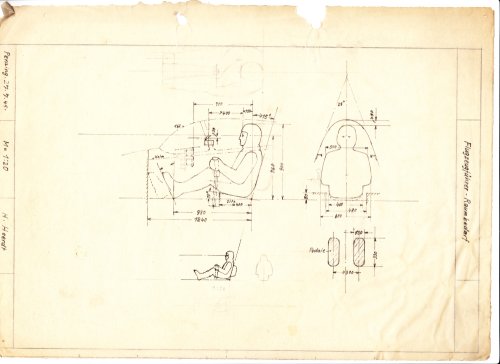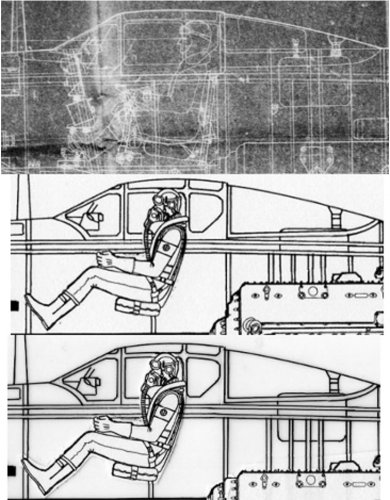...the Kawasaki Ki-88 was a simpler derivative of the Ki-64, with the nose engine
and the vulnerable surface cooling system removed. It was never built.
Windswords, beat me to it! According to the article I referenced above,
"Also during 1943, the Kawasaki team tendered...
a proposal for a simplified version...in which the forward engine was removed,
and an orthodox cooling system was provided for the centrally mounted engine,
which could be either the Ha-40 (licence-built DB601A), or the more powerful
Ha-140, which was bench running...in 1943.
This alternative to the Ki-64 seems to have been inspired by the lingering doubts
about the ability of the evaporative cooling system to survive battle damage and
some concern about the technical complexity of the tandem engine and propeller
drive system.
...authorised Kawasaki to proceed...on 3 February 1943 under the designation Ki-88...
A mock-up was built...
With the wing and fuselage of the prototype (Ki-88) almost complete...
the Ki-88 was dropped in October 1943."
(my bold)
Hardrada55, the 3-view you've posted is in good agreement with the Ki-88 images
posted in 'Japanese Secret Projects', which I can't post here due to copyright
restrictions, so yes, that is the Ki-88. Do you have a source?
Again from the above article, the production Ki-64, referred to as the Ki-64-KAI,
was to have several improvements over the prototype, the most important of which
was the replacement of the prototype's propeller, (front one variable-pitch, but rear one
fixed-pitch, but see below), with a licence-built German VDM electrically controlled,fully-feathering
constant-speed contraprop, which would allow either engine to be shut down and
re-started in flight. Cruising on one engine only would usefully extend the aircraft's endurance.
Use of the more powerful Ha-140 engine mentioned previously was also foreseen in time.
(In the text, the front propeller is given as the fixed pitch one, whereas the rear propeller is stated
to be of fixed pitch in the key to the cutaway. This may be a mis-understanding, given that the front
propeller was driven by the rear engine, and vice-versa. Putnam's 'Japanese' gives the rear unit as the
fixed pitch one.)
cheers,
Robin.




